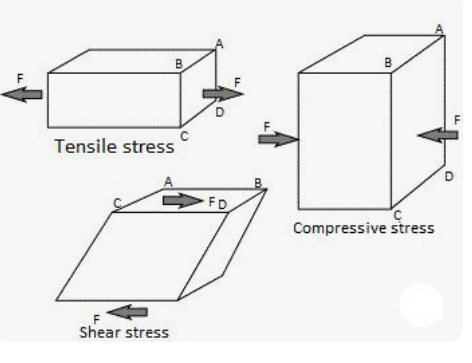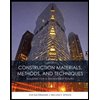Define and explain all the different types of stress and strain with the help of neat sketches clearly showing the directions of application.
Define and explain all the different types of stress and strain with the help of neat sketches clearly
showing the directions of application.
- The ratio of force to per unit area is known as stress. It's unit is N/mm2 .
where,
P= force
A=area
- The ratio of change in length to original length is known as strain. It is unitless. It is denoted by e.
The various types of stresses are:-
a) Tensile stress:-
The stress acting on body causing tension in the body and elongation due to this action of force is known as tensile stress. It acts in pull direction stretching the body and causing increase in size of body. It is generated due to tensile force.
b) Compressive Stress:-
The stress acting on unit area due to compressive force is known as compressive stress. The stress acting on body causing compression in body and causes reduction in size of body is known as compressive stress. It acts in push direction. There is compaction and reduction in size of body. It is generated due to compressive force.
c) Shear Stress:-
The stress which acts tangentially on the body is known as shear stress. It is caused due to parallel and tangential action of forces.
The diagram of all three can be represented as below:-

There are some additional stress developed too:-
a) Bending stress:- This stress is developed due to bending acting in member due to compressive load.
b) Torsional stress:- This stress is developed due to torsion action in the member due to twistibg moment,
Step by step
Solved in 3 steps with 4 images


